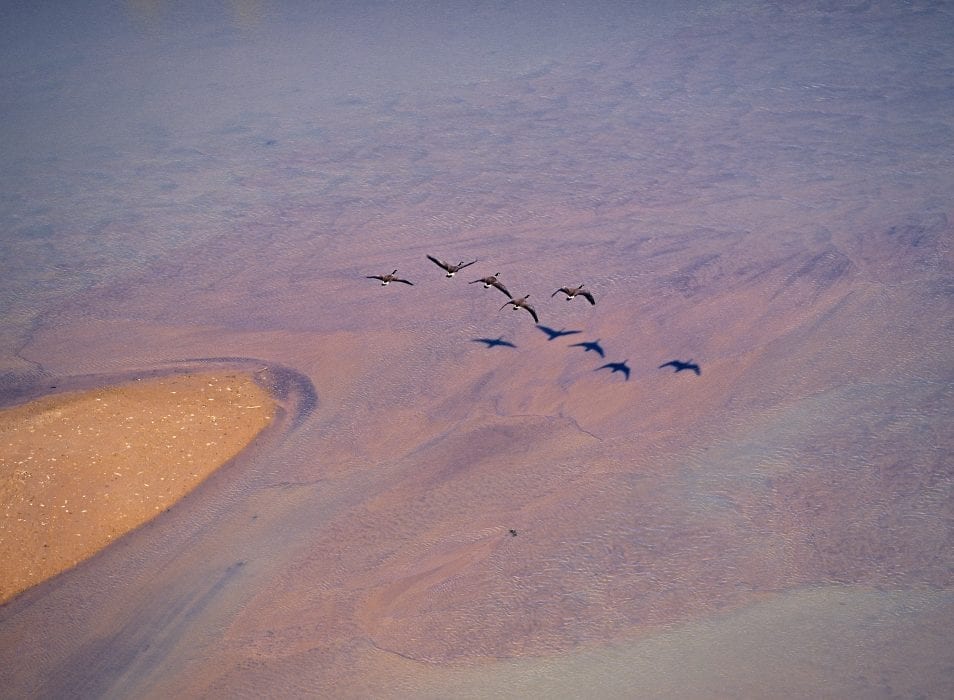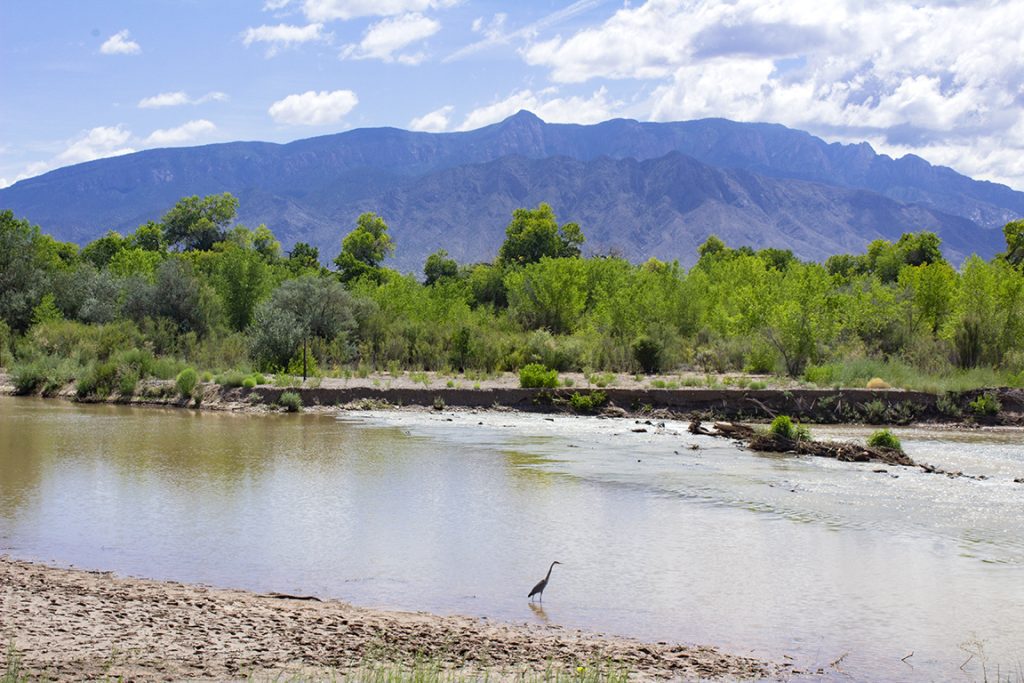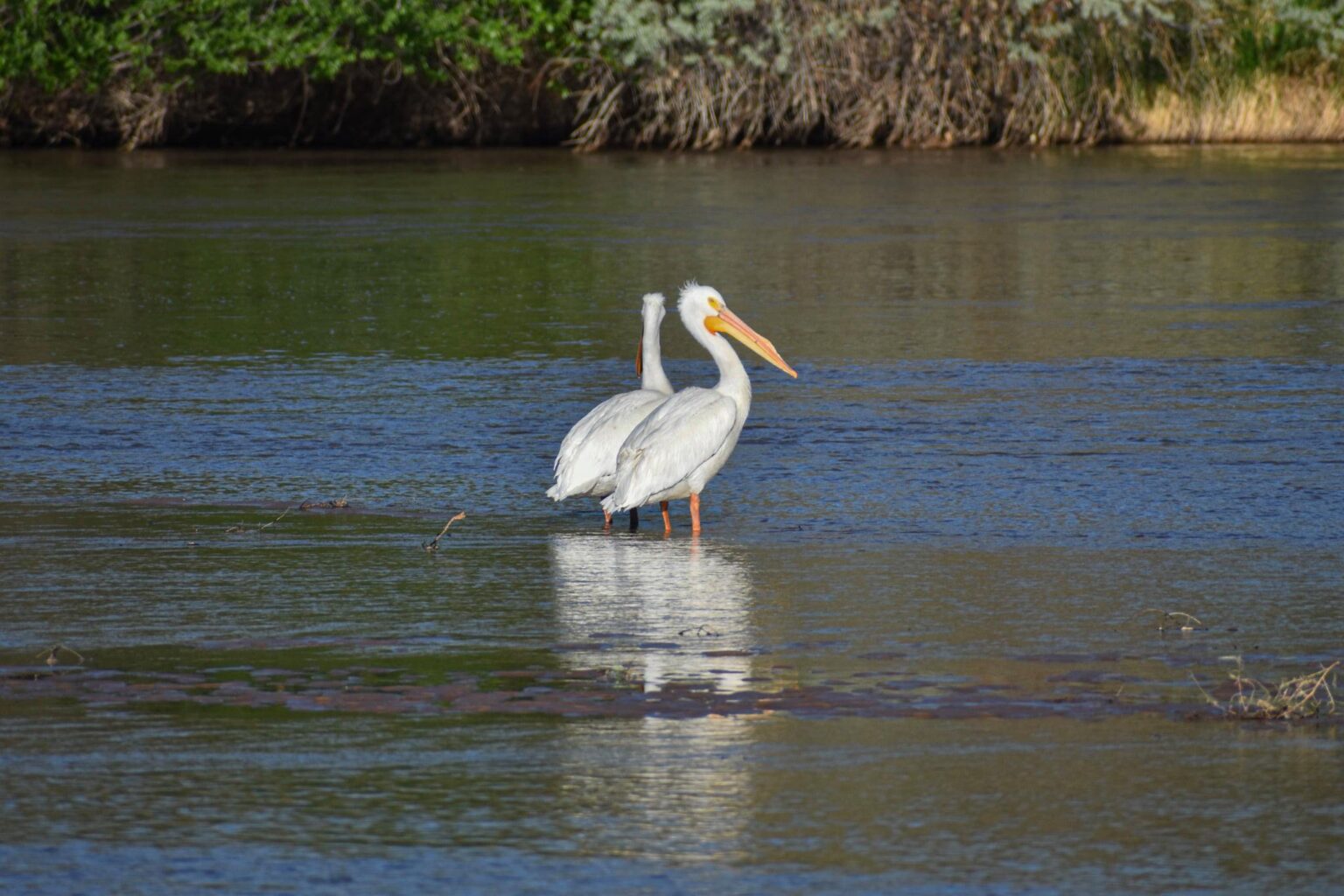It was recently reported that New Mexico’s “top water official” will soon be retiring his post, with speculation arising whether Governor Michelle Lujan-Grisham will “conduct a national search or choose a candidate from the many water experts in New Mexico.” Unfortunately, however, many of those water experts cannot actually be considered for the job. By New Mexico law, Mike Hamman’s replacement must be selected from the much more limited pool of licensed professional engineers.

Canada geese, Bosque del Apache National Wildlife Refuge, New Mexico. Photo by Adriel Heisey.
This obscure statutory requirement reflects an outdated belief that water management in New Mexico is fundamentally an engineering challenge, a mindset that dominated the West in the 20th century. Wild rivers were seen as unruly beasts to be tamed by dams and levees. Floodwaters were to be captured; meandering streams were to be straightened; lush riparian areas and verdant wetlands were to be drained. The task of the State Engineer was to quantify and apportion water rights to maximize the economic benefit of extractive human water use.
After more than a century, the limits of this narrow approach to water management have become clear in New Mexico and across the West. Confining the Rio Grande behind dams and between levees has resulted in a static ecosystem in dramatic decline. Without natural floodwaters, the cottonwood bosque cannot successfully regenerate and the spawning cycle of the endangered Rio Grande silvery minnow has been severely disrupted. Draining shallow groundwater has devastated native streamside vegetation, contributing to the spread of invasive salt cedar and Russian olive. Communities have been separated from the river by massive levees and drains, and important cultural sites have been destroyed or inundated by dams and reservoirs.

Photo: USFWS, Marvin de Jong
A much-needed awareness is emerging regarding the multiple benefits offered by alternative green infrastructure approaches to water management. These holistic frameworks recognize that rivers are complex systems that can deliver clean water for cities and farms, while also supporting fish and wildlife, recharging depleted aquifers, and providing recreational, aesthetic, and spiritual benefits for all communities. But this requires working with natural processes, instead of trying to dominate them.

The Rio Grande provides habitat for a plethora of native species, including endangered species like the Rio Grande silvery minnow, Southwestern willow flycatcher, and yellow-billed cuckoo. Photo by Javier Gallegos.
Recent efforts by the State Engineer’s office, in conjunction with engineers at the Middle Rio Grande Conservancy District, to restart diversions of natural Rio Grande flows into a massive ditch called the Low Flow Conveyance Channel illustrate the need to open the door to new voices at the highest level of state water policy. Today’s challenges require new, more creative approaches than simply reviving 1950’s-era engineering ideas. We should be looking to decommission the Conveyance Channel and restore a healthy, ecologically functioning natural river system to improve deliveries to Elephant Butte. Even the Bureau of Reclamation – typically a bastion of old-school engineers – is considering this type of approach in its Lower San Acacia Reach Improvements Project. It’s time for New Mexico to join the 21st century.
New Mexico’s current water challenges are not merely engineering problems, but complex issues of law, policy, ecology, culture, and collective action. Should we look to engineers to quantify the cultural value of protecting traditional Pueblo agriculture or maintaining vibrant acequia communities, the mental health benefits offered by a flowing Rio Grande through New Mexico’s largest urban area, the spirit of a Sandhill crane in flight?
With the legislature out of session, it appears unlikely that the state legislature will have a chance to change this outdated statutory requirement before a new State Engineer takes office. But I look forward to a future where New Mexico’s water is no longer engineered, but stewarded, perhaps by an ecologist, water lawyer, or public policy professional. Or maybe even a mediator, elder, or healer. One can dream, right?
